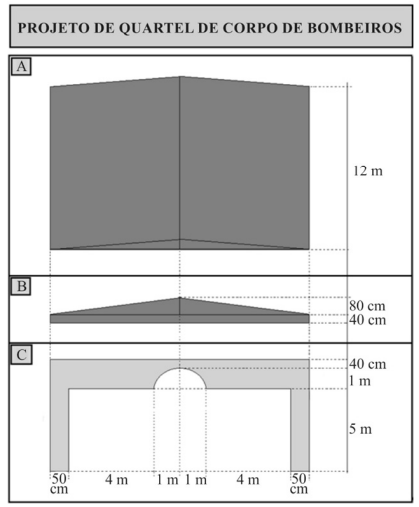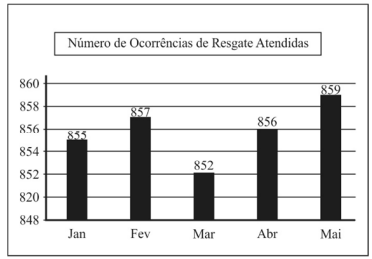Questões Militares Para cbm-pa
Foram encontradas 330 questões
Resolva questões gratuitamente!
Junte-se a mais de 4 milhões de concurseiros!
Figura 1A3-II

A figura anterior apresenta diferentes partes do projeto de
um quartel, em que A corresponde à vista superior do telhado, B
corresponde à perspectiva frontal do telhado, e C corresponde à
fachada do prédio.
Figura 1A3-II

A figura anterior apresenta diferentes partes do projeto de
um quartel, em que A corresponde à vista superior do telhado, B
corresponde à perspectiva frontal do telhado, e C corresponde à
fachada do prédio.
Figura 1A3-I

A figura precedente apresenta o número de ocorrências de
resgate atendidas pelo Corpo de Bombeiros nos primeiros cinco
meses de 2022.
Figura 1A3-I

A figura precedente apresenta o número de ocorrências de
resgate atendidas pelo Corpo de Bombeiros nos primeiros cinco
meses de 2022.
I Blood product transfusion from infected donors can transmit the disease.
II The also called kissing bug’s feces and urine carry the protozoan parasite.
III Infected pregnant women cannot contaminate their babies during pregnancy or childbirth.
IV Contaminated food or drinks can transmit Chagas disease to people.
Choose the correct option.